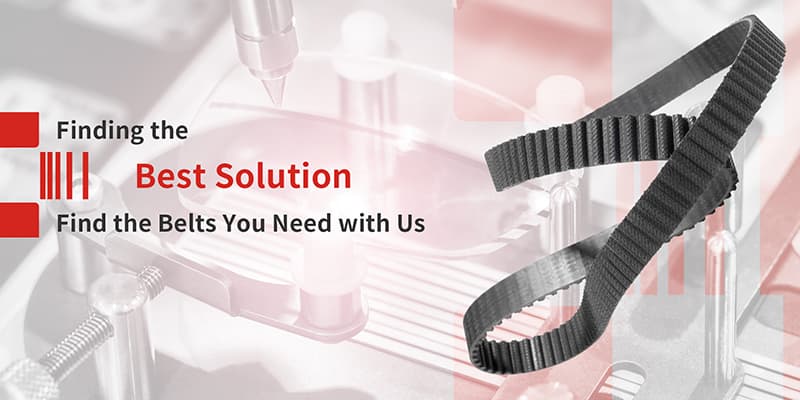Common uses of belts include power transmission, material transportation, power generation, cooling systems, air conditioning and heating systems and other aspects of power transmission, transportation of materials and drive a variety of mechanical equipment, which are indispensable components of our daily life and industrial production.

What is a belt?
A belt is a mechanical element with a belt-like structure, usually made of rubber, synthetic material or metal. Usually used for transmitting power or transporting materials, it is a key component widely used in industry and daily life. It acts like a connecting element, capable of transferring power or material.
Common Types of Belts
There are many types of belts, which can be categorized into the following main types according to their structures and uses:
Conveyor belts:
Used for conveying a variety of materials, including solids, liquids and powders. They are widely used in various industrial and logistic applications to improve production efficiency.
Drive belts:
Usually used to connect engines and mechanical equipment to transfer power. They play a key role in automobiles, ships, airplanes and various mechanical equipment.
Drive belts:
Used to synchronize the movement of mechanical systems, ensuring that the various parts work together at a specific time and speed. Important in engineering, manufacturing and automation systems.
V-belt:
A common type of power transfer belt with V-shaped grooves that provide better friction for applications that require efficient power transfer.
Belt Materials and Products
Different applications require different belt materials. Below are some common belt materials and their applicable products:
Rubber belts:
With good curvature and abrasion resistance, they are suitable for applications that require flexible transmission, such as automobile engine belts and conveyor belts.
Synthetic belts:
Usually made of reinforced synthetic fibers, with high strength and durability, suitable for high load and high speed transmission, such as industrial machinery and generator belts.
Metal belts:
Composed of metal links, suitable for high-temperature and high-strength environments, such as dryer and furnace conveyor belts.
Selection of belts
When selecting the right belt, the following key factors and considerations need to be taken into account:
Application and working conditions:
Identify the task for which the belt will be used and the conditions of the working environment, including temperature, humidity and chemical exposure.
Load and speed:
Understand the load and speed requirements of the application to select the appropriate belt type and size.
Material Selection:
Select the appropriate belt material, such as rubber, synthetic, or metal, based on the needs of the application.
Maintenance and Durability:
Consider the maintenance requirements and expected service life of the belt to ensure system reliability.
Cost Effectiveness:
Consider the cost, performance and life expectancy of the belt to make an economical choice.
Selecting the right belt is critical to the mechanical system and material handling process. Understanding the different types and materials of belts helps ensure efficient operation and long-term reliability.
At HEADWAY, you'll find timing belts, delta belts and other industrial transmission belts. These include multi-tooth, multiple types, single and double sided, and many more. Contact us with your needs or questions.






